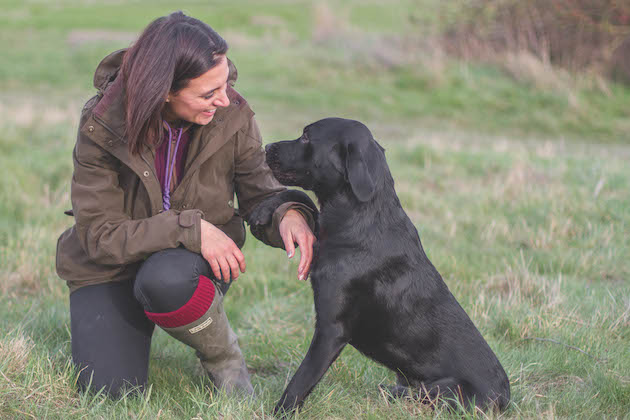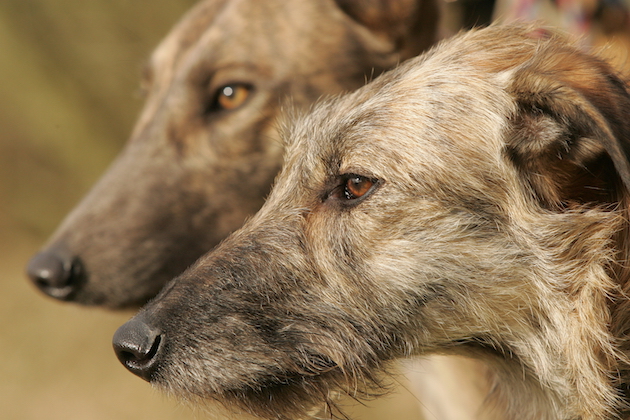Can a rescue make a top gundog?
The number of dogs in rescue centres is soaring and the gundog world could benefit by tapping into this resource, writes Ellena Swift

It is important to find a dog keen to engage with a handler
Looking at rescue gundogs
When clients approach me about getting a working dog, I have to admit that looking at rescue gundogs is not the first thing I’d suggest. But perhaps this has been a bit short-sighted of me. The vast majority of working dog owners do not wish to compete in field trials and working tests, or breed, so Kennel Club paperwork is not essential. As most experienced dog trainers will know, excellence can come from unknown, and often unexpected, lineage.
If you go on any shoot in the UK, it is highly likely that you will see various breeds working, not only your typical retrievers, spaniels, and hunt, point and retrieve types. On our home shoot, there are two terrier crosses and it wasn’t long ago that my entire picking-up team comprised two non-Kennel Club-registered German shepherds.
It is clear that good breeding and consistent lines will certainly help, but as I have always said, no good dog is a bad breed. So is there any potential in rescue gundogs?
With COVID-19, there has been an unprecedented rise in the demand for not only puppies, but dogs as well. Unfortunately, this sharp rise can lead to only one certainty and that is a huge increase in the number of dogs ending up in rescues and being rehomed.
Sadly, a lot of people do not consider the commitment, expense, work and dedication it takes to have a dog. This means that, before the age of five, many of them will end up either being sold on, put in rescues or simply rehomed. I have known even more desperate cases where the owner does not care and takes the dog to have it put to sleep or dumps it. Either way, there is expected to be a huge increase in dogs available to rescue.

A wide range of breeds can play a part in a shoot day, even German shepherds
Success stories
There have been many success stories about dogs taken from rescues and trained up to be service dogs. Rescue dogs have been used as drugs or explosives detection dogs, search and rescue dogs and even guide dogs.
So why isn’t the gundog world benefiting from this untapped resource? I already know of some lovely cocker spaniels, rehomed from a spaniel rescue, that work in the beating line. Excellent rescue gundogs.

Many unwanted ‘lockdown pups’ may become gundogs
I also know of a Labrador that was returned to the breeder and is now an open field trial winner.
First, without knowing the dog’s lines and breeding, it is always an unknown commodity. So, as much as a rescue can assess a dog’s ability and temperament, and try to uncover any previous training, it is very difficult to predict what they will be like. It is even harder to know if they will ever make a decent shooting dog.
Most shooting/working dogs are companions and family pets as well. This again makes it a little difficult when looking in rescues. Many of these dogs, through their previous experiences (and sometimes poor breeding), have behavioural issues. Separation anxiety, fearful aggression, reactivity on lead and resource guarding are all common problems with rescue dogs brought to me. All of these issues are certainly improvable, if not totally curable. But many owners do not want the hassle of ‘a problem dog’, especially since they have no guarantee it will make the grade as a shooting companion.
Another big issue with rescuing a dog for working is that many rescues will not allow owners to rescue a dog if they so much as mention the words ‘working’ or ‘shooting’. Even more taboo is the word ‘kennel’. For the short-sighted powers that be at the main rescue centres, they hear ‘working dog’ and immediately think of a dog shut outside in a damp, dark, cold kennel with no bedding or food, with the dog only coming out when required to work. As we all know, this couldn’t be further from the reality for 99.9% of working dogs.
The fact that nearly all working dogs are better trained, fitter and certainly have fewer issues than the vast majority of pets should surely tell them something. I am always impressed at a trial when the competitors and their dogs all cram on to a trailer. It is extremely rare to hear even a grumble, let alone have a problem. The dogs are balanced, socialised and trained. The handler controls those that are slightly more predisposed to being grumpy. I am almost certain that if I took 24 random pet owners and their dogs and asked them to sit squashed in the same fashion, it would be total carnage.
Fortunately, there are rescues that recognise that certain breeds and, in fact, certain individual dogs thrive when given a job. Smaller local rescues seem to be more open to rehoming dogs to working homes. Once such charity is one that I assist with.
I foster dogs that need a space until they can be moved into a permanent home. I also temperament-test them and have them near livestock to assess their reaction. This is all vital information the rescue requires in order to place the dog in the most suitable home. Black Retriever X Rescue has confirmed that, like many, they are happy to rehome to a working home, if they believe this is the life the dog is most suited to. The welfare and happiness of the dog is, and always should be, paramount.
A recent issue is the sheer number of applications for each dog. The COVID-19 pandemic has led to a rise in applications to rescue dogs. At the Black Retriever X Rescue, for example, they are often receiving more than 400 applications for one dog. Sifting through and assessing every application is a difficult task.
So what can you do if you have decided to rescue rather than shop? First, contact as many local rescues as possible. Explain the kind of home you can offer. This will cut down the number of dogs that are suited. Ensure you have a secure, well-fenced garden or area for the dog. Sadly, most homes with no fenced-in garden will not be considered due to the high possibility of the dog escaping. A good idea is to ask the rescue for guidelines on what your home requires, so you can ensure it ticks all the boxes.
Thinking of getting a rescue dog? Run through this checklist before you decide.
A useful rescue dog checklist Before you take on a rescue dog you need to ensure that he or she…
Qualities
The next thing is to keep an eye out for a suitable dog. Ideally, I look for a dog with a basic desire to hunt and carry things. I don’t mind if that is a toy or ball. The physical item can be changed later on. I also look for a dog with a willingness to play or engage with a handler. It is important to remember that many dogs in rescues are withdrawn and subdued, so some of these qualities might be hard to see.
Lastly, I look for a tolerance for other dogs and people. A dog attending a shoot doesn’t have to be overly social. In fact, sometimes this can be hard to work with. The dog simply needs to be able to cope with being in relatively close proximity to other dogs and people. A slight wariness can be worked on.
If you are lucky enough to offer a home to a rescue, the best thing is to find a good trainer to guide you both through the learning process. With the right guidance, patience and a bit of time, so many dogs could prove their worth to working handlers.









